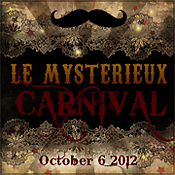facts and trivia
A traveling carnival is an amusement show that may be made up of amusement rides, food vendors, merchandise vendors, games of chance and skill, thrill acts, animal acts or sideshow curiosities. A traveling carnival is not set up at a permanent location, like an amusement park, but is moved from place to place. Its roots are similar to the 19th century circus with both being set up in open fields near or in town and moving to a new location after a period of time. Unlike traditional carnival celebrations, the North American traveling carnival is not usually tied to a religious observance.
In 1893 the Chicago's World's Columbian Exposition (also called the Chicago World's Fair) was the catalyst for the development of the traveling carnival.The Chicago World's Fair had an area that included rides, games of chance, freak shows and burlesque. After the Chicago World's Fair, traveling carnival companies began touring the United States. Due to the type of acts featured along with sometimes using dishonest business practices, the traveling carnivals were often looked down upon.
Modern traveling carnivals play both state and county fairs along with smaller venues such as church bazaars, volunteer fire department fund raisers and civic celebrations. Traditionally, on the evening of the last day of the events, the sponsoring organization will often pay for a fireworks display that signals the end of the day's festivities.
source: WIKIPEDIA
TRIVIA
Carnivals consist of games, rides, shows, feasting, and overall merriment, which developed from the traditional outdoor festivals of Europe in honor of seasonal changes or religious holidays that date back hundreds of years ago.
Fairs are large theme based events held to promote and present agricultural, commercial, industrial, and artistic exhibits to fairgoers while also providing the fun and amusement of carnivals.
The traveling carnival began in America in the late 1800’s as a result of improved transportation and technology.
A famous American carnival is the Mardi Gras, which is held in late winter in New Orleans, Louisiana. It was introduced to America on March 3, 1699 by French explorer, Iberville.
The first annual fair in the American colonies was held in 1641 in New Amsterdam (now New York City) to showcase farm products of the local area.
The USA’s first state fair was held in Syracuse, New York in September of 1841.
The first World’s Fair was held in 1851 in England at London’s Crystal Palace. The fair exhibited American machinery of the Industrial Revolution.
The Eiffel Tower was built by Gustave Eiffel for the Paris World’s Fair of 1889, which honored the 100th anniversary of the French Revolution.
The Ferris wheel was invented by George W. Ferris for the 1893 World’s Fair, which was held in Chicago to commemorate the 400th anniversary of Columbus’s landing in America.
The first time that fairgoers ate hot dogs and ice cream as they walked along the midway was during the Saint Louis World’s Fair in 1904, thus coining these two foods as the world’s first “fast foods”.
What we call “Cotton Candy” was originally called “Fairy Floss” and was invented in 1897 by candy makers William Morris and John C. Wharton of Nashville, Tennessee. It was introduced at the St. Louis World’s Fair in 1904. It has also been called “Spun Sugar” and in the United Kingdom it is called “Candy Floss”.
The Midway is the main path or street that fairgoers walk along to find sideshows, concession stands, and other amusements.
Games you play at a fair or carnival also go by the slang name, “joints”.
Midnight Madness is when the fair stays open past midnight and into the early morning hours.
source: VIVI'S ORIGINAL SAUCE CARNIVAL MUSTARD
Subscribe to:
Comments (Atom)














